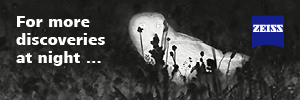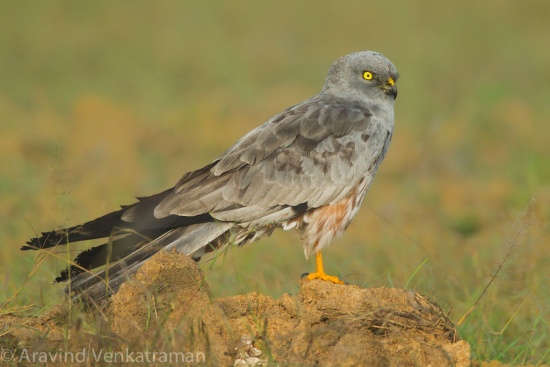- Circus pygargus
Identification
39–49 cm (15¼-19¼ in)
Male: Grey upperparts, head (paler around eye), and upper breast, rest of undersides mainly whitish with reddish elongated spots; white upper-tail coverts, upper tail grey, under-tail with three faint bars. Primaries are black , and there is one black wingbar above and two on underwing.
Female: mainly greyish brown, strongly streaked on underside, much white around eye
Juvenile: dark wings and mantle, warm reddish brown undersides with strong facial markings (much white) but weak white collar around upper neck
In flight: shows four noticable free primaries
Similar species
A lengthy thread which discusses separation from Hen Harrier.
See also Pallid Harrier
Distribution
Breeding in Eurasia, wintering to India, Middle East and Africa.
A very patchy range across Europe, widespread in Spain but found in scattered pockets from France east to the Baltic States and Poland, and south to Romania. More continuous in Belarus and Ukraine and east across Russia. Isolated outposts in southern Britain, central Sweden and southern Finland, Turkey and North-West Africa.
Extremely rare breeder in Britain with very small numbers present in summer and few successful nests. To the east range extends to northern Iran, Turkestan and Kazakstan, possibly into China in western Sinkiang.
Occurs as a passage migrant across Europe, the Middle East and North Africa concentrating in particular at Gibraltar. Rarely recorded in the region in winter, most migrate to sub-Saharan Africa occurring from Senegal east to Ethiopia and south through the eastern half of the continent to South Africa. The commonest wintering harrier in much of Africa. Most have left Europe by mid-October and return in April.
Vagrants have been recorded in Iceland.
Taxonomy
This is a monotypic species[1].
Habitat
Marshes, reedbeds and cultivated land, especially cornfields, also moorland and heathland and rough grassland.
Behaviour
Flight
Usually fly with wings held in a high V; if gliding there is often a bend at the wing near the body, so that the inner part is more vertical. Mostly fly low when hunting, can be seen high above when migrating.
Diet
Food consists of small mostly vertebrate animals.
Vocalisation
References
- Clements, J. F., T. S. Schulenberg, M. J. Iliff, D. Roberson, T. A. Fredericks, B. L. Sullivan, and C. L. Wood. 2016. The eBird/Clements checklist of birds of the world: v2016, with updates to August 2016. Downloaded from http://www.birds.cornell.edu/clementschecklist/download/
- Handbook of the Birds of the World Alive (retrieved September 2016)
Recommended Citation
- BirdForum Opus contributors. (2024) Montagu's Harrier. In: BirdForum, the forum for wild birds and birding. Retrieved 19 April 2024 from https://www.birdforum.net/opus/Montagu%27s_Harrier
External Links
GSearch checked for 2020 platform.






